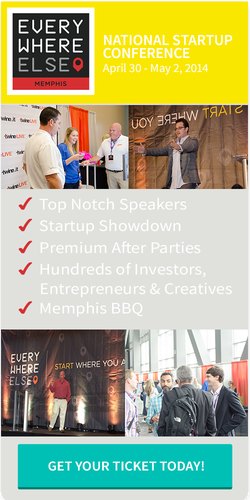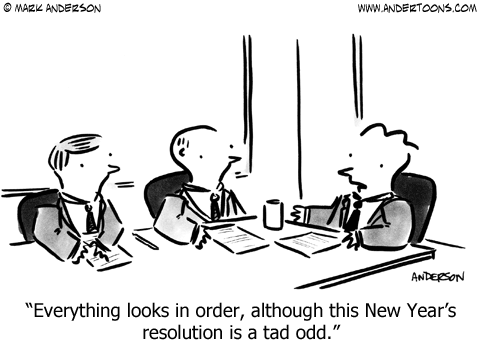 Oh, the lies that entrepreneurs tell themselves. Even when all signs point to the contrary, it can be very easy to make up excuses for why your business isn’t succeeding. Here are some of the worst lies that entrepreneurs tell themselves, and the (sometimes) hard truths:
Oh, the lies that entrepreneurs tell themselves. Even when all signs point to the contrary, it can be very easy to make up excuses for why your business isn’t succeeding. Here are some of the worst lies that entrepreneurs tell themselves, and the (sometimes) hard truths:
- The money will come eventually. You think that if your idea is top notch, if the product/service you’re offering solves a real problem, or if you have true passion and drive, that your company will succeed and eventually start making some real money. This is a fallacy. It’s easy when you’re busy growing your company to buy into this lie, but incredibly dangerous. It may be true that there is a pot of gold further down the road, but you can’t just count on it being there. You must plan for it.
- If I price low enough, I can attract more business. This may be true in some sense. You may bring in more business if your prices are lower than your competition’s. But if your pricing isn’t covering your costs and allowing for the kind of margin you need to make a profit to at least live on, you’re shooting yourself in the foot. You need to figure out your gross profit (how much you need to cover fixed costs — from salary to materials to marketing). Based on this figure, you can calculate your gross profit margin and figure out how much you need to make in sales.
- If something isn’t working, I can always change direction. Pivoting is an essential startup business practice. Knowing when to change direction, tweaking your offerings, and repositioning yourself in the marketplace are all good things. But this isn’t a magic bullet. You can’t just shift with the wind and expect things to work out. You need to base a direction change on number-driven data that guides and supports your plan. Before you change direction, you need to map out what steps you will take.
- All I need to succeed is more volume. Quantity is a good marker for business success, but it’s not the only one. Increasing volume can lead to scaling issues. Instead of pursuing more customers, think about what other tactics you could take. How could you increase your dollar per customer? How can you save on costs per product? How can you increase customer satisfaction to ensure customer loyalty and increase the customer value over time? These metrics are just as important as volume.
- I will only hire the best. Of course you want top-notch employees, but you may need to redefine who that is. Find out what positions can be outsourced to save on astronomical staffing costs. Top team members are expensive. Sometimes they are worth that cost, but remember that you can also hire for potential, rather than experience. Under-staffing is a good choice for many bootstrapped startups.
- My time is best spent focusing on my industry. Not exactly. Of course you want to be on top of what’s going on in your industry, but if you want to see the big picture, get fresh perspectives, and make valuable connections, you need to look outside of your niche. Business partners outside of your area are sometimes the most valuable contacts you can have.
- I’ve tried X and it doesn’t work so I’m done with it. Just because you’ve tried something before, doesn’t mean you can’t tweak it and try again. Sometimes small changes can have a big impact. For example, a colleague of mine who was VP of Marketing for a huge company had had little success with affiliate marketing. He was thinking of shutting down this marketing channel but, instead, decided to put some real money and time behind it. He hired someone solely responsible for managing the program. This one change made for astronomical increases in revenue for the company.
- X has always worked for me in the past, so if I just keep doing it, I will be successful. Just because you’ve always done something a certain way, doesn’t mean it’s the best way, the most efficient way, or the most cost-effective way. As an entrepreneur, you need to keep an open mind and always look for better solutions. Even if your way was the best way at some point, times change, markets change, economic conditions change, and the competitive landscape changes. Business is dynamic. You need to be too.
- My passion for my company won’t allow me to fail. Wrong. Without determination and persistence — and a real love for what you’re doing — you won’t be able to see this thing through to the finish line. But passion, in and of itself, isn’t enough. You need to execute. A lot of hard work goes on behind the scenes.
- My product/service is so great that my business can’t fail. We’d like to believe this fallacy, but unfortunately it’s not true. A great idea is important. If there’s a real market for your idea, then you’re already a couple of steps ahead in the game. But it’s not enough.
A dash of optimism is a good entrepreneurial characteristic. You’re going to face a lot of setbacks, so the ability to put on some rose-colored glasses to improve the view is understandable. But when you begin to repeat the same lies and make them your mantra, you’re preventing clarity, masking opportunities, and getting in the way of your growth. When you stop lying to yourself, you can start anew. That’s where real change lies: that’s the future of your company.
















 Five years ago, my first tech company was acquired. Two years ago, the acquirer IPO’d. As the Chief Strategy Officer, I ended my time at the company with a signatory bell ringing at the NASDAQ. Until that point, my life had moved quite swiftly without much vacation, only letting up to marry my high school sweetheart and raise my son.
Five years ago, my first tech company was acquired. Two years ago, the acquirer IPO’d. As the Chief Strategy Officer, I ended my time at the company with a signatory bell ringing at the NASDAQ. Until that point, my life had moved quite swiftly without much vacation, only letting up to marry my high school sweetheart and raise my son.